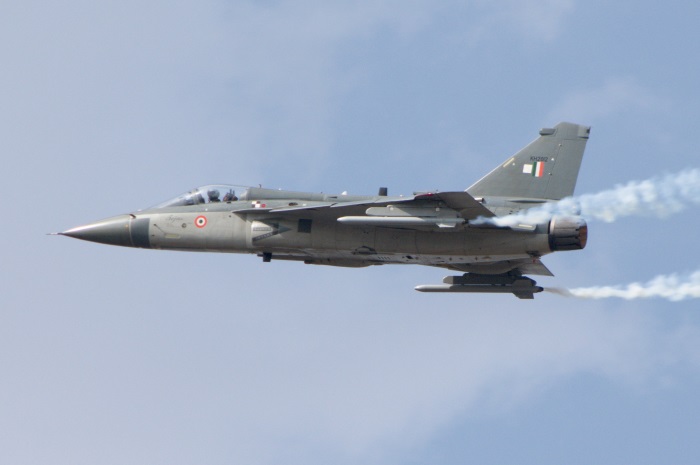 |
| Tejas LCA at Aero India 2013. Photo Credit: Vijainder K Thakur |
Defence Innovations in India - The Fault Lines, an Occasional Paper written by Dr. Laxman Kumar Behera, a research fellow at the Institute of Defense Studies and Analysis (IDSA), makes interesting reading.
The Occasional Paper reviews India's performance, especially the performance of the Defense Research and Development Organisation (DRDO), and conclusively proves it has been dismal. The paper uses unimpeachable parameters - patents granted and value of import substitution achieved (negligible) over the past two decades - and reliable data published by Indian government's sources and reputed foreign institutions to reach its conclusions.
The author attributes the uninspiring performance to, among other factors, the poor quality of scientists employed by DRDO, low R&D spending by public sector defense industry giants such as HAL and BEL, and practically no R&D spending by shipyards and Ordnance Factories (OFs). The lack of R&D culture in shipyards and OFs makes it difficult for them to even absorb technology, either painstakingly developed by DRDO or procured at great cost from abroad as happened with Arjun MBT and Scorpene submarines production, the paper points out.
After an incisive analysis the author surprisingly concludes that higher organizational restructuring is the way out of morass! The paper ends with a banal plug for the creation of the Defense Technology Commission first proposed by The Rama Rao Committee (RRC), constituted by the MoD to review the functioning of DRDO, in its report - Redefining DRDO - submitted in March 2008.
Interestingly, a recent op-ed in The Hindu has Ashok Parthasarathi, former S&T adviser to Prime Minister Indira Gandhi and Secretary to the Government of India, in several S&T departments, explaining why the creation of a Defense Technology Commission would not address the shortcoming in the functioning of Indian Defense Industry.
The author completely overlooks increased accountability, focus on proven past excellence achieved in missiles, fighters, warships, tanks and submarines development, improved management and the employment of world class scientists being paid world class salaries as the way forward.
Trying to master the entire spectrum of defense production all at once is what we have been attempting to do without any discernible success. Where is the imperative to produce all armament indigenously? We are not an isolated country with great power ambitions, as Russia was and China is. Thanks to our foreign policy, we have the option to buy our weapons from multiple sources, all of good repute.
Self sufficiency in defense production should be a long term goal not an immediate one. Keeping ourselves adequately armed to ward of threats from China and Pakistan is a more immediate goal.
The correct approach would be keep buying excellent weapons from abroad, while progressively funding domestic excellence in armament production. For example, after its notable success with the LCA, ADA should be funded and pushed to work on the LCA Mk-2 and the AMCA projects. Funding ADA makes more sense than funding HAL's participation in the FGFA project, in view of HAL's poor performance in producing fighters.
No comments:
Post a Comment